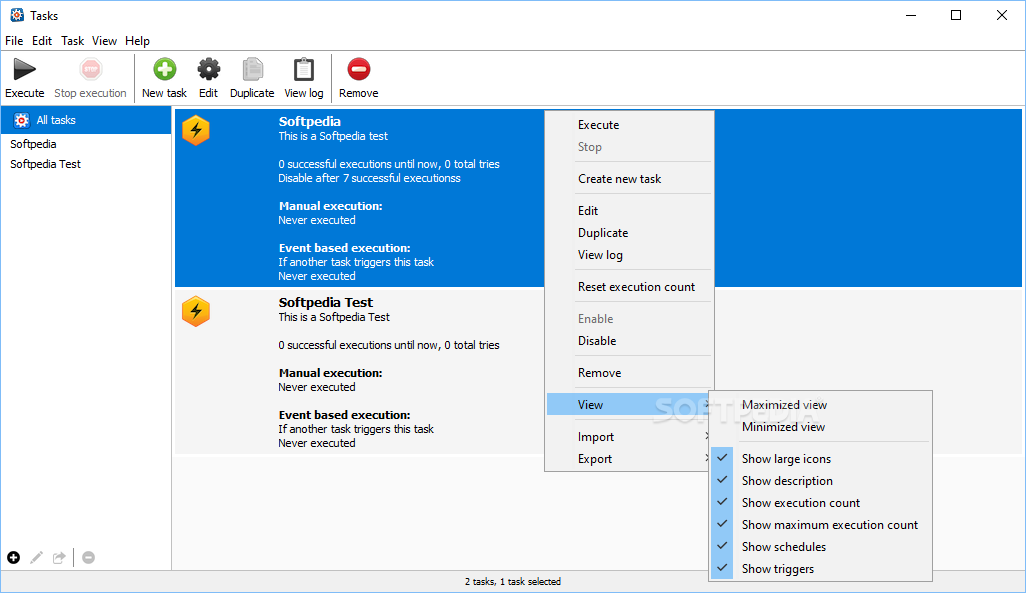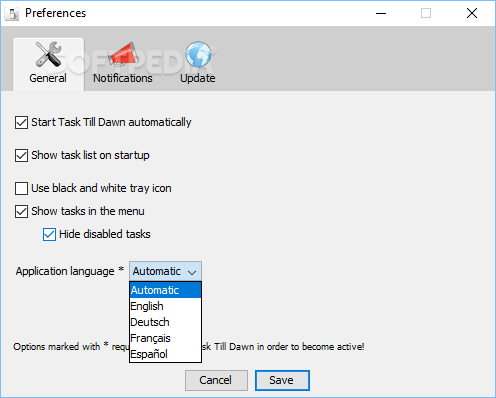

User input should trigger visual feedback (duh), some of it directly, i.e.

My situation is the following: I am designing a scientific utility with an interactive UI.

#Task till dawn python software#
I only use this operator sparingly, but in the case of in-line ad-hoc FsCheck Arbitraries, I find it useful.Īddendum : You can get rid of the nc value with TIE fighter infix notation.I'm working on a piece of software design, and I'm stuck between not having any idea what I'm doing, and feeling like I'm reinventing the wheel. When the last argument passed to a function is another function, you can replace the brackets with a single application of the <| operator. Notice that there's no longer any need for a closing bracket after Dead =! actual. The solution started to dawn on me because I've been learning Haskell for the last half year, and in Haskell, you often use the $ operator to get rid of unwanted brackets.

To make a long story short, enclosing a multi-line anonymous function in brackets is a source of errors. None of the alternatives compile at this point.
#Task till dawn python code#
The editor doesn't have a chance, though, because at this point, I'm still typing, and the code doesn't compile. What it really should have done was this: There's already a closing bracket immediately to the right of the cursor, and the editor assumes that this bracket belongs to the opening bracket I just typed. What normally happens when you type an opening bracket is that the editor automatically inserts a closing bracket to the right of your cursor, but in this case, it doesn't do that. The editor detects that I'm writing an opening bracket, but since I have the closing bracket to the immediate right of the cursor, this is what happens: When I wrote the above property, for example, when I reached the point where I wanted to call the calculateNextState function, I wrote: If you ever need to use a nested level of brackets within that anonymous function, your vigilance will be tested to its utmost. When entering new lines, you have to keep diligent, making sure that the closing bracket is always to the right of your cursor. After you've typed the closing bracket, you have to move your cursor one place to the left. When you're writing the property, however, this syntax is cumbersome.Īfter having written Prop.forAll nc, you start writing (fun neighborCount -> ). While it isn't pretty, I haven't found it that bad for readability, either. Notice how the opening bracket appears to the left of the fun keyword, while the closing bracket appears eleven lines down, after the end of the expression Dead =! actual. There's one tiny problem with this way of expressing properties using Prop.forAll: the use of brackets to demarcate the anonymous multi-line function. forAll nc ( fun neighborCount -> let liveNeighbors =ĬalculateNextState (cell :: liveNeighbors |> shuffle |> set) cell
#Task till dawn python how to#
Last year, I described how to define and use ad-hoc, in-line Arbitraries with FsCheck.Xunit. Slightly improved syntax for defining ad-hoc, in-line Arbitraries for FsCheck.Xunit.


 0 kommentar(er)
0 kommentar(er)
